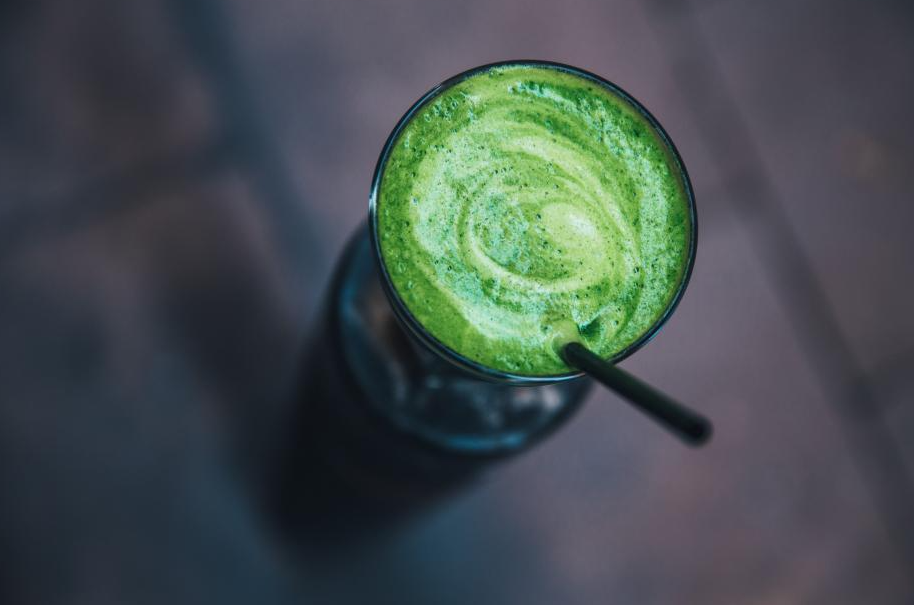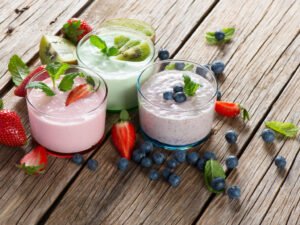Smoothies have gained significant popularity as a nutritious and convenient option for individuals aiming to shed pounds while enjoying delicious meals.
This versatility makes them a favored choice on various weight loss diets.
One of the primary benefits of incorporating smoothies into a weight loss plan is their potential for nutrient density.
A well-prepared smoothie can pack a substantial amount of vitamins, minerals, and antioxidants, particularly when it includes a blend of fruits, vegetables, and healthy fats.
For example, leafy greens such as spinach or kale can be incorporated without significantly altering the flavor, offering numerous health benefits while promoting satiety.
Furthermore, fruits such as berries and bananas can provide natural sweetness, reducing the temptation to consume high-calorie desserts or snacks.
When crafted thoughtfully, they can supply essential nutrients while being lower in calories compared to traditional meals.
For those on a weight loss journey, this attribute allows for a reduction in caloric intake without sacrificing satisfaction. Many find that a well-balanced smoothie can curb hunger and provide lasting energy, setting a positive tone for the day ahead.
Additionally, blending ingredients into a smoothie can enhance the tasting experience, making nutritious foods more palatable.
Smoothie Nutrients
Macronutrients consist of proteins, fats, and carbohydrates, which all play significant roles in bodily functions.
Proteins are vital for muscle repair and growth, and they also contribute to satiety, helping individuals feel fuller for longer periods.
Incorporating protein-rich ingredients such as Greek yogurt, protein powder, or nuts into smoothies can enhance their weight loss potential.
Healthy fats are another crucial macronutrient, albeit often underestimated.
Sources of healthy fats, such as avocado or chia seeds, not only improve the texture of smoothies but also promote satiety.
These fats slow down digestion and keep hunger at bay, aiding in weight management. Meanwhile, carbohydrates should primarily come from fruits and vegetables, which provide essential energy without excessive calories.
Micronutrients, including vitamins and minerals, should not be overlooked in weight loss smoothies. They support various bodily functions, including metabolism and immune response.
Fresh fruits and leafy greens are excellent sources of these nutrients. Smoothies that incorporate varied colors of fruits and vegetables will likely provide a more comprehensive range of vitamins and minerals.
Furthermore, the role of fiber cannot be overstated. Fiber enhances digestive health and contributes to feelings of fullness.
It slows down the digestion and absorption of food, which helps in controlling cravings. Including fibrous ingredients such as oats, spinach, or flaxseeds in smoothies can significantly boost their weight loss efficacy.
Ensuring proper hydration is essential, as water not only supports metabolic processes but also assists in appetite regulation. A well-crafted smoothie can therefore be a powerful ally in a weight loss journey.
Top Ingredients for Weight Loss Smoothies
Incorporating the right ingredients into your weight loss smoothies can significantly enhance their nutritional value and effectiveness. Below is a comprehensive list of the best components to consider when concocting these delicious beverages.
Spinach is a nutrient-dense green leafy vegetable that adds volume to smoothies without a hefty calorie count.
It is high in fiber, aiding digestion and promoting a feeling of fullness, which is essential for weight loss. A cup of raw spinach contains only about 7 calories.
Kale is another powerful green. Rich in vitamins A, C, and K, kale is a low-calorie food that may provide a sense of satiety due to its fiber content.
This vigorous leafy vegetable contains roughly 33 calories per one-cup serving, making it an excellent addition to your smoothie recipes.
Berries, such as blueberries, strawberries, and raspberries, are excellent low-calorie fruit choices packed with antioxidants. A cup of mixed berries has about 70-85 calories, and their natural sweetness allows you to reduce added sugars while providing essential vitamins and minerals that support overall health.
Greek yogurt is a great source of protein, which is vital for maintaining muscle mass while losing weight. A 5-ounce serving typically contains around 100-150 calories. The probiotics in Greek yogurt also support gut health, which can aid in weight management.
Chia seeds are an ideal additive for weight loss smoothies, as they swell in water  and create a feeling of fullness. Just one ounce has about 137 calories, along with healthy omega-3 fatty acids, fiber, and protein, making them a great nutritional boost.
and create a feeling of fullness. Just one ounce has about 137 calories, along with healthy omega-3 fatty acids, fiber, and protein, making them a great nutritional boost.
Incorporating protein powder into your smoothies also serves as an effective strategy for weight management.
Depending on the type you choose, one scoop of protein powder can range from 100 to 200 calories, helping to sustain energy levels and muscle recovery post-exercise.
Lastly, adding a splash of coconut water can enhance flavor while supplying hydration and a modest amount of electrolytes with around 46 calories per cup.
Selecting the right ingredients for your weight loss smoothies not only enhances their taste but also supports your health and weight loss goals effectively.
Smoothie Recipe: Green Detox Smoothie
Preparation Time: 10 minutes
Serving Size: 2 servings

This refreshing green detox smoothie is designed to boost your metabolism while delivering essential nutrients.
To prepare, combine 1 cup of spinach, 1 ripe banana, 1/2 cup of pineapple chunks, 1/2 an avocado, and 1 cup of unsweetened almond milk in a blender. Blend until smooth.
This rich concoction is full of vitamins and minerals, promoting healthy digestion and aiding in weight loss. The incorporation of spinach, a low-calorie leafy green, provides fiber and helps to keep you feeling full longer.
The healthy fats from avocado also contribute to satiety.
Nutritional Information (per serving): Calories: 180, Protein: 4g, Carbohydrates: 30g, Fiber: 6g, Fat: 7g.
Smoothie Recipe: Berry Blast Smoothie
Preparation Time: 5 minutes
Serving Size: 1 serving

This berry blast smoothie is perfect for those who enjoy a sweet yet tangy flavor. For this recipe, blend 1 cup of mixed berries (blueberries, strawberries, and raspberries), 1 tablespoon of honey or agave syrup, and 1 cup of low-fat yogurt.
This delightful mix not only tastes good but is also packed with antioxidants, which can support your weight management journey.
Berries are low in calories but high in fiber, making them an excellent choice for reducing cravings and promoting overall health.
Nutritional Information: Calories: 210, Protein: 10g, Carbohydrates: 40g, Fiber: 7g, Fat: 2g.
Smoothie Recipe: Tropical Mango Smoothie
Preparation Time: 7 minutes
Serving Size: 1 serving
Indulge in a tropical experience with this mango smoothie.
Combine 1 cup of diced mango, 1 banana, and 1/2 cup of coconut water in your blender.
This smoothie not only provides hydration due to the coconut water but also offers a soothing, refreshing taste.
Mango is rich in vitamins A and C, which help to improve skin texture and boost immunity while aiding in weight loss efforts.
The natural sweetness from the fruits may help satisfy your sweet tooth, contributing to successful diet management.
Nutritional Information: Calories: 220, Protein: 2g, Carbohydrates: 55g, Fiber: 4g, Fat: 0g.
Tips for Making the Perfect Weight Loss Smoothie
It is important to choose high-quality, nutrient-dense ingredients that can offer both flavor and satiety. Base ingredients like leafy greens, such as spinach or kale, are excellent choices since they are low in calories yet rich in essential vitamins and minerals.
Additionally, incorporating a source of protein, such as Greek yogurt, protein powder, or nut butter, can help keep you full longer and support muscle maintenance during weight loss.
When blending, start with liquids first, such as water, unsweetened almond milk, or coconut water. This can help your blender run more smoothly.
Next, add in your leafy greens followed by any fruits and other ingredients. Be cautious with fruit portions; while they provide fiber and vitamins, they also contain natural sugars, which can add calories. Ideally, half of your smoothie should consist of vegetables while the other half can encompass fruits.
Avoid adding high-calorie sweeteners, juices, or pre-packaged smoothies that may contain hidden sugars and preservatives.
Instead, experiment with different flavor enhancers like cinnamon, vanilla extract, or a dash of ginger, which can elevate taste without compromising the nutritional integrity of the drink.
One effective strategy is to use a mix of frozen fruits; they not only add texture but also help in achieving a creamy consistency without additional calories from ice cream or yogurt.
Customization is key when creating a weight loss smoothie. Each individual has their own dietary requirements and taste preferences; therefore, experimenting with various combinations can lead to discovering satisfying options that fit into your weight loss plan.
Keep track of the ingredients and their effects on your body to find the best combinations over time.
Common Mistakes to Avoid
When it comes to creating smoothies for weight loss, several common mistakes can hinder your progress.
One prevalent issue is adding an excessive amount of fruit.
While fruits are nutritious and provide essential vitamins and minerals, they also contain natural sugars that can contribute to increased calorie intake.
To create a balanced smoothie conducive to weight loss, aim to limit the fruit portion to a single serving, such as half a banana or one small apple.
This practice ensures that your smoothie remains low in sugar and calories while still providing sweetness and flavor.
Another pitfall is the use of high-calorie additives.
Ingredients like sweetened yogurt, flavored nut butters, or syrups can significantly increase the caloric content of your smoothie.
Instead, choose plain or unsweetened yogurt and opt for natural nut butters with no added sugars.
Also, consider using unsweetened almond milk or coconut water as a base for your smoothies, as these options tend to be lower in calories than regular fruit juices or dairy milk, making them a healthier choice.
Inattention to protein is another common mistake. Protein plays a crucial role in curbing hunger and aiding weight loss by promoting satiety.
Failing to include a good protein source in your smoothie can lead to increased cravings later in the day.
Incorporating options such as Greek yogurt, protein powder, or nut-based milks can enhance the protein content of your smoothie, making it a more satisfying meal or snack.
By being mindful of these common pitfalls, you can create delicious smoothies that effectively support your weight loss journey while enjoying a variety of flavors and nutrients.
Incorporating Smoothies into Your Diet
Integrating weight loss smoothies into your daily routine can offer a convenient and enjoyable way to enhance your nutritional intake while supporting your weight management goals.
One effective strategy is to allocate smoothies as meal replacements, snacks, or post-workout refreshments.
For those looking to replace traditional meals with smoothies, consider using them during breakfast or lunch.
A nutrient-dense smoothie can supply essential vitamins, minerals, and healthy fats, making it a wholesome alternative to heavier fare.
It is vital to ensure that the smoothie contains an adequate balance of proteins, healthy fats, and fibers to keep you satiated throughout the day.
As a snack option, smoothies can be a great way to curb hunger between meals. Depending on your activity level, consuming a smoothie that is lower in calories yet rich in fiber will help stave off cravings without derailing your dietary objectives.
Many individuals also find that smoothies, when consumed post-workout, can effectively replenish lost nutrients and assist in muscle recovery.
Combining protein powder with fruits and vegetables can create an ideal recovery blend, enhancing your workout’s effectiveness.
When incorporating smoothies into a balanced diet, variety is key. Experimenting with different ingredients can help maintain interest and provide a broader spectrum of nutrients.
Utilize seasonal fruits and vegetables to keep the flavors fresh and exciting, while also ensuring you are receiving the diverse nutrients your body requires.
However, it is essential to recognize that smoothies should not be viewed as a standalone solution for weight loss. Instead, they should be integrated into a comprehensive approach to health and wellness that includes balanced nutrition, regular exercise, and mindfulness practices.
By adopting such a holistic perspective, individuals can create a sustainable lifestyle that supports their weight loss journey while fostering overall well-being.
So, we encourage you to explore your own smoothie recipes and embrace the joy of creating delicious, nourishing drinks as part of your journey toward a healthier self.



